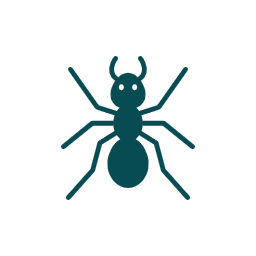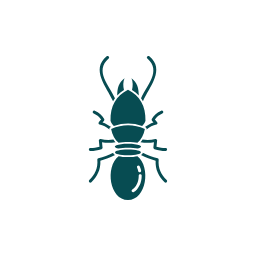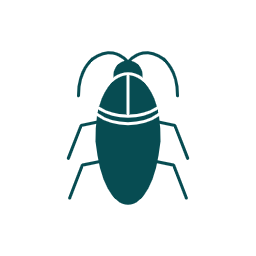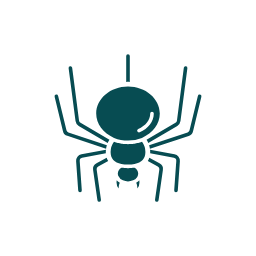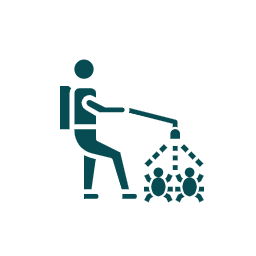Termites are a nightmare once they invade your property, but the real nightmare starts once they disappear.
If you’ve just had a termite treatment, odds are you’re wondering what to do next. This guide is here to help you make sense of the practical, financial and structural steps you need to take to fix the damage termites have caused. Whether the termites simply left behind small marks or incredible structural damage, it’s important to be able to know how to evaluate, how to fix, and how to prevent in the future.
This is an article you’ll want to read if you’re a homeowner who has just grappled with a termite infestation, because even after you successfully get rid of the pests, the damage can silently persist to erode your home’s structure. Knowing the right steps can help you clean it all up, protect your home, save you money, and prevent termites from ever coming back.
Assess the Termite Damage
You should really know the problem before you start any repairs. Termites typically operate in silence, gnawing on timber and forming networks of tunnels that can undermine the frame of your home. There is no other way to determine the extent of the damage without a proper inspection.
Keep an eye out for small holes in the wood, blistering paint, or a hollow sound when you tap on the walls or floor. These are some of the most common signs you have termites. An experienced inspector or structural engineer can assist you in figuring out the extent of structural damage and if your home’s framework has been compromised. In some instances, you might face so much damage your home is no longer safe.
Once they have taken a satisfactory look, your contractor or carpenter will draw a map of the affected area, detailing every beam, joist, and piece of damaged wood. That lays out the road map for recovery.
Repairing Structural Termite Damage
Termites don’t just leave cosmetic damage (or, as it may be, damage that never even saw the light of day) when they chew through the wood of your home: they are actually a threat to the entire frame of your house. Structural repairs are extremely calculation-driven tasks that must be done with accuracy and experience and often only by a licenced contractor.
The damaged wood must first be removed. That could be floor or ceiling joists or wall timber. If the infested area was caught early, the only damage might be a hole that can be patched with filler and a small cosmetic touch-up. But in the case of more severe damage, you’re simply going to have to replace the wood entirely with new wood — particularly if the damage stands the risk of spreading or deteriorating.
Depending on the extent of the damage that remains, repairs become an issue that professionals with a licence and insurance must undertake so as to ensure that the structure of your home remains intact. Don’t cut corners here: structural damage can cost thousands of dollars down the line if not repaired properly now.
How to Hire the Right Contractor for Termite Repairs
Picking the right contractor is not just about skill — it’s about trust. You will also need to find a company that knows how to deal specifically with termite damage and can offer a guarantee on their work. Find someone who has a good understanding of timber pest problems and has experience repairing homes that have suffered termite damage.
Ask them if they’ve ever used a pest control company and whether they’d be open to working with your termite treatment provider. The best contractors can work around whatever the previous treatment has been, like bait stations, soil barriers or chemicals like Termidor.
Insured and with a good reputation, your contractor will give you a detailed breakdown of the cost to repair the damage. Expect a written quote to include materials, labour, the timeline, and whether the work is guaranteed.
Treating and Sealing Damaged Wood After Termites
Once you’ve removed the compromised sections, it’s time to treat and reinforce what remains. Any leftover timber or wood should be sealed and protected using approved termite treatment chemicals. This is crucial for stopping old termite pathways from attracting a new colony.
A key way to fix termite damage long-term is by applying borate-based treatments to exposed wood. These act as both a deterrent and a preservative. It’s also smart to consider epoxy-based filler for cosmetic repair where full wood replacement isn’t necessary.
Be sure to also seal any cracks or small holes in the drywall and around the baseboards. These can act as entry points for future pest invasions. A post-treatment inspection can confirm whether the protective measures are working.


Prevention Is Better Than the Cure
You’ve done the hard work to recover from termite damage, so let’s keep it that way. Future termite prevention starts with routine termite inspections, ideally done by a licenced pest control expert.
Make sure any external wood is treated and raised above soil level. Fix that leaking pipe or roof leak that creates excess moisture—termites can cause more damage in humid environments. Seal up gaps and remove unnecessary timber around the house.
Install physical barriers or chemical deterrents where necessary. Your pest control provider may recommend control methods tailored to your region. Homes in the Pacific North-west and the southeastern parts of Australia tend to experience more severe infestations, so stay ahead of the problem with regular monitoring.
What Homeowners Can Safely Do
While some repairs should be left to professionals, there are a few DIY projects homeowners can tackle to reduce costs. You can safely replace baseboards, apply filler to superficial wood damage, and repaint cabinet interiors or walls that show surface deterioration.
If you’re confident with tools, installing pre-treated timber trim or patching minor floor damage may be within your skillset. But remember: anything involving the home’s structure, electrical work, or widespread termite damage should be done by a licenced contractor.
Always use caution. If there’s a chance your home insurance might cover some of the damage, doing DIY work before a full inspection could void your claim. Document everything with photos and receipts.
Signs You May Have Missed
Even after the exterminator is gone, signs of significant damage could still be lurking behind walls or under the floor. Watch for darkened wood, peeling or bubbling paint, or inexplicable sags in the frame or the ceiling.
If you have any of these sounds with your woodwork, you may have untreated termite damage. Don’t ignore these signs. And the longer you delay fixing these lingering problems, the more expensive the bill for repair becomes.
There are occasions when a termite colony can still be dormant or semi-dormant after treatment. The safest way to be certain that the problem is indeed gone is to schedule a follow-up inspection.
Final Thoughts: How to Fully Recover from Termite Damage
Recovering from termite damage isn’t just about removing pests—it’s about restoring peace of mind. From the moment the termites are gone, your focus should shift to evaluating the damage, hiring the right contractor, and protecting your home from future infestations.
Here’s a quick recap of the next steps:
- Assess the damage thoroughly with a licensed inspector
- Repair or replace all damaged wood, prioritising structural elements
- Hire a qualified and insured contractor for significant repairs
- Treat remaining wood to prevent future infestations
- Schedule routine inspections to keep termites from coming back
And remember: you don’t have to navigate this alone.
If you’ve recently completed a termite treatment, contact Pest2Kill today.
We’ll help you inspect the damage left, develop a restoration plan, and offer proven pest control strategies to get rid of termites for good. With over 1,000 five-star reviews and a reputation built on trust, Pest2Kill is the team Australian homeowners rely on to protect what matters most.
FAQS
What are the early signs of a termite infestation I should watch for?
Spotting a termite infestation early can save your home from serious decay. Look out for subtle clues like bubbling paint, sagging floors, and mud tubes along the foundation. You may also hear a faint tapping sound behind the walls—this can be termites eating away at the wood. Any of these signs of termite infestation should be taken seriously and reported to an exterminator as soon as possible to avoid long-term structural integrity issues.
How does pest control differ from termite treatment?
While pest control deals with a broad range of insects and rodents, termite treatment is more specialised and often involves a combination of soil barriers, baiting systems, or wood treatments. Unlike general pest solutions, termite treatment targets colonies hidden deep within timber or underground, ensuring that the core infestation is addressed. It’s best to work with a licenced builder or exterminator who specialises in timber pests to ensure lasting protection.
How can I safely get rid of the termites without professional help?
If you’re considering a DIY approach to get rid of the termites, be cautious. Over-the-counter sprays may kill visible termites but won’t reach the hidden colony or prevent further decay. You might try borate treatments on new wood or install physical barriers if the infestation is minor, but for a complete solution, contacting a qualified exterminator is often necessary to preserve your home’s structural integrity.
When should I schedule a termite inspection after treatment?
After termite treatment, it’s essential to schedule an inspection every 12 months to catch any new activity before it spreads. However, if you live in a high-risk area or had severe structural damage previously, you may want a follow-up inspection as soon as 3–6 months after treatment. Regular inspections are key to maintaining your home’s structural integrity and ensuring termites can’t cause recurring problems.
How do I assess the damage if I suspect a hidden termite problem?
To assess the damage, tap along walls and floors to listen for hollow sounds. Look for blistered or discoloured surfaces and check around baseboards or roof timbers for sagging. If you spot suspicious signs, hire a builder or exterminator with experience in termite-related decay. A proper assessment helps determine whether cosmetic fixes are enough or if you need to replace sections with new wood to maintain safety.
What pests are commonly confused with termites?
Certain pest species, like carpenter ants and wood borers, can mimic the signs of termite infestation. However, unlike termites, these pests often leave wood shavings or sawdust behind. Carpenter ants also tend to work in more open tunnels, whereas termites build enclosed mud tubes. If you’re unsure, a trained exterminator can help identify the pest and recommend the correct treatment to prevent further decay.
Can termite damage affect my home’s structural integrity?
Yes, termites can cause serious structural integrity issues if left untreated. Over time, they weaken essential supports like beams and joists, making your home unsafe. Even if you get rid of the termites, the remaining decay can continue to worsen without proper repair or replacement using new wood. Always have a licenced builder inspect affected areas to ensure your home remains safe and stable.


